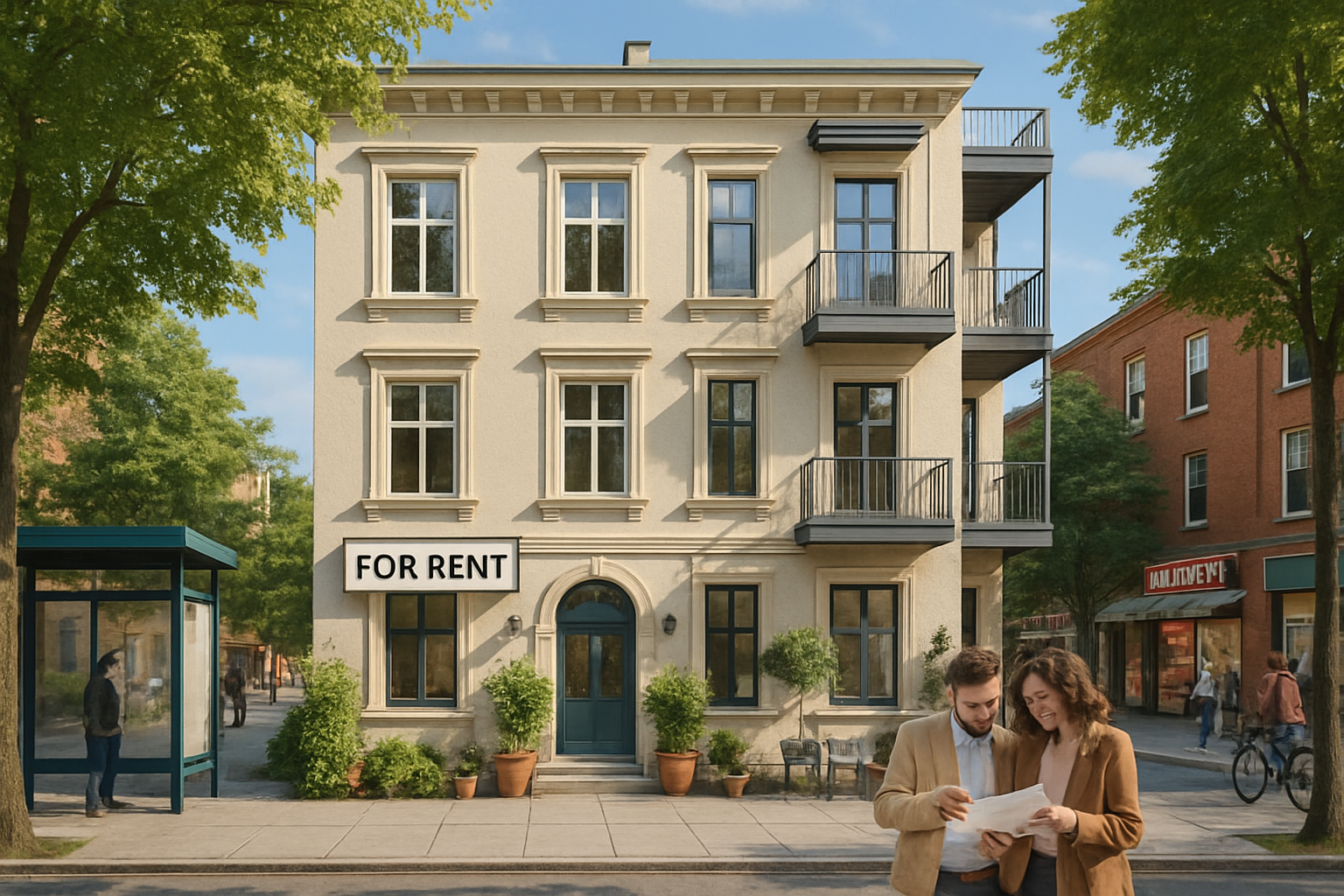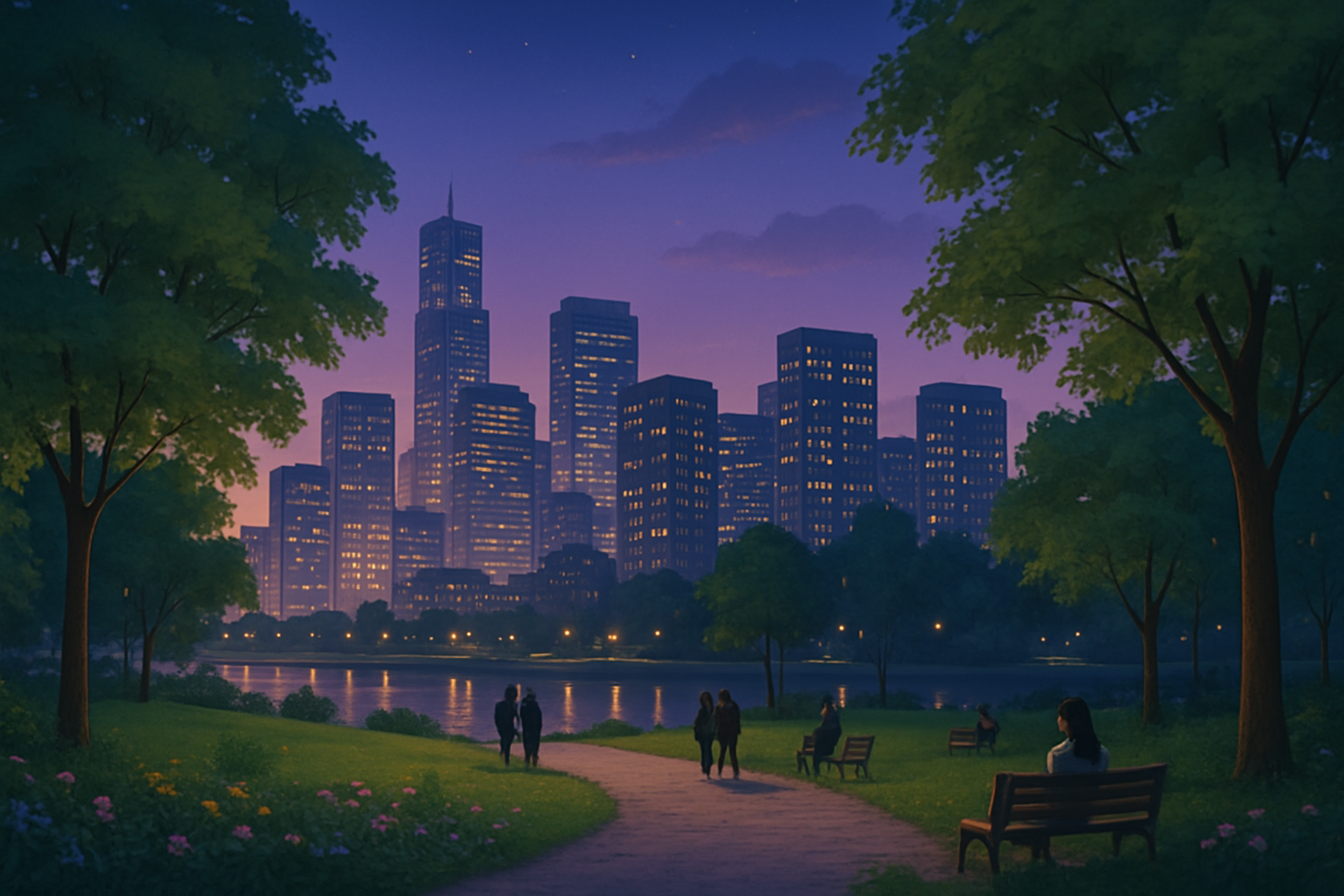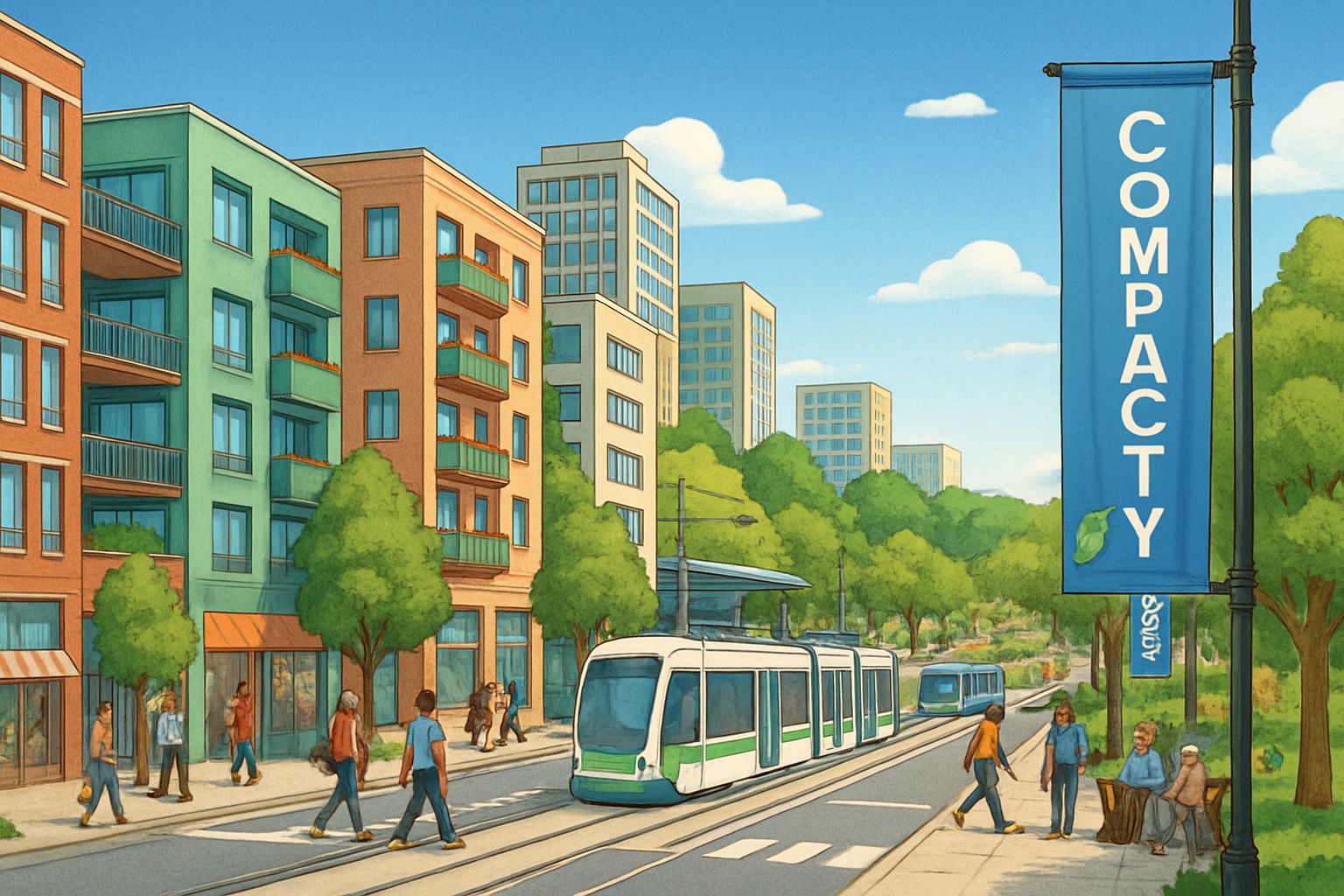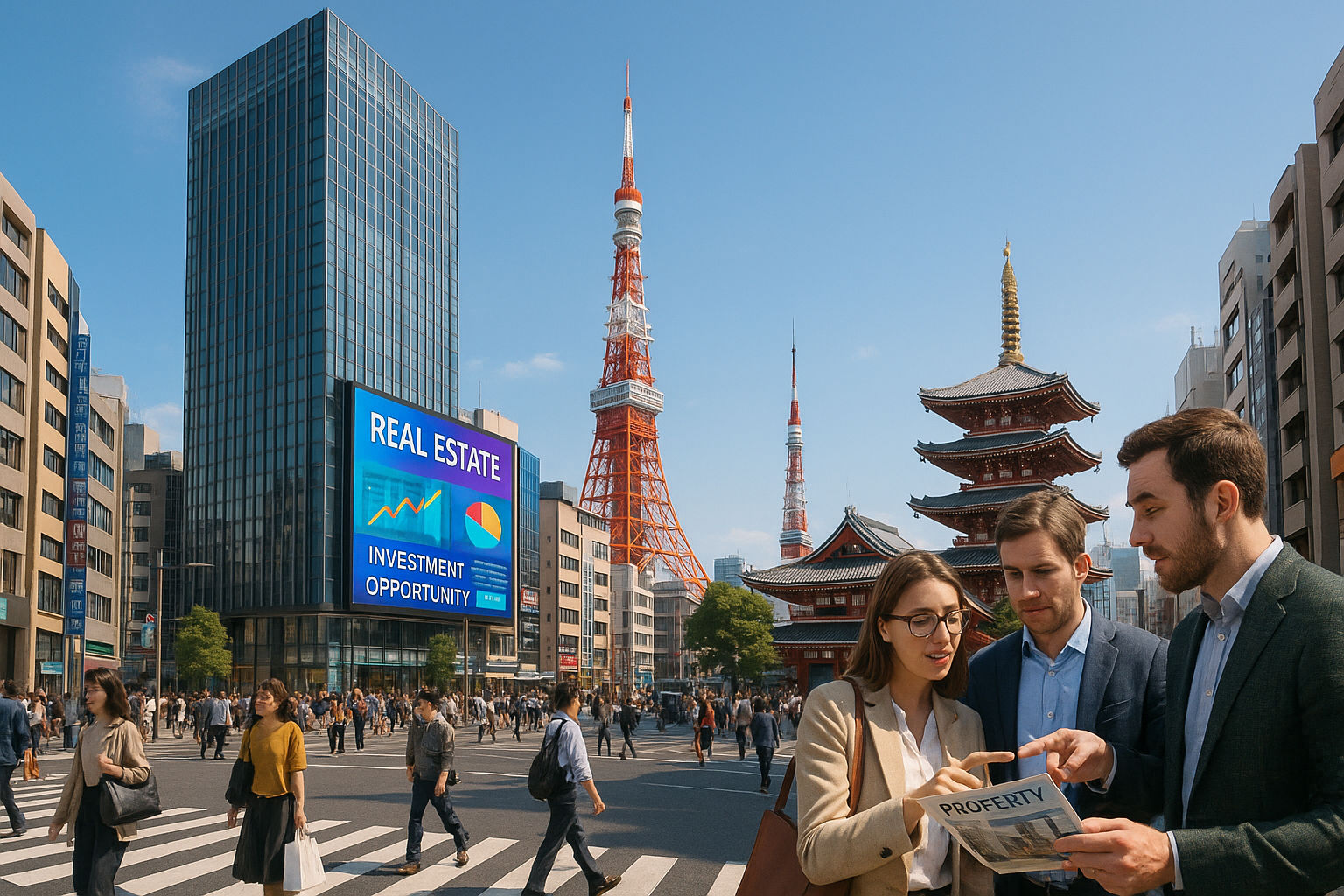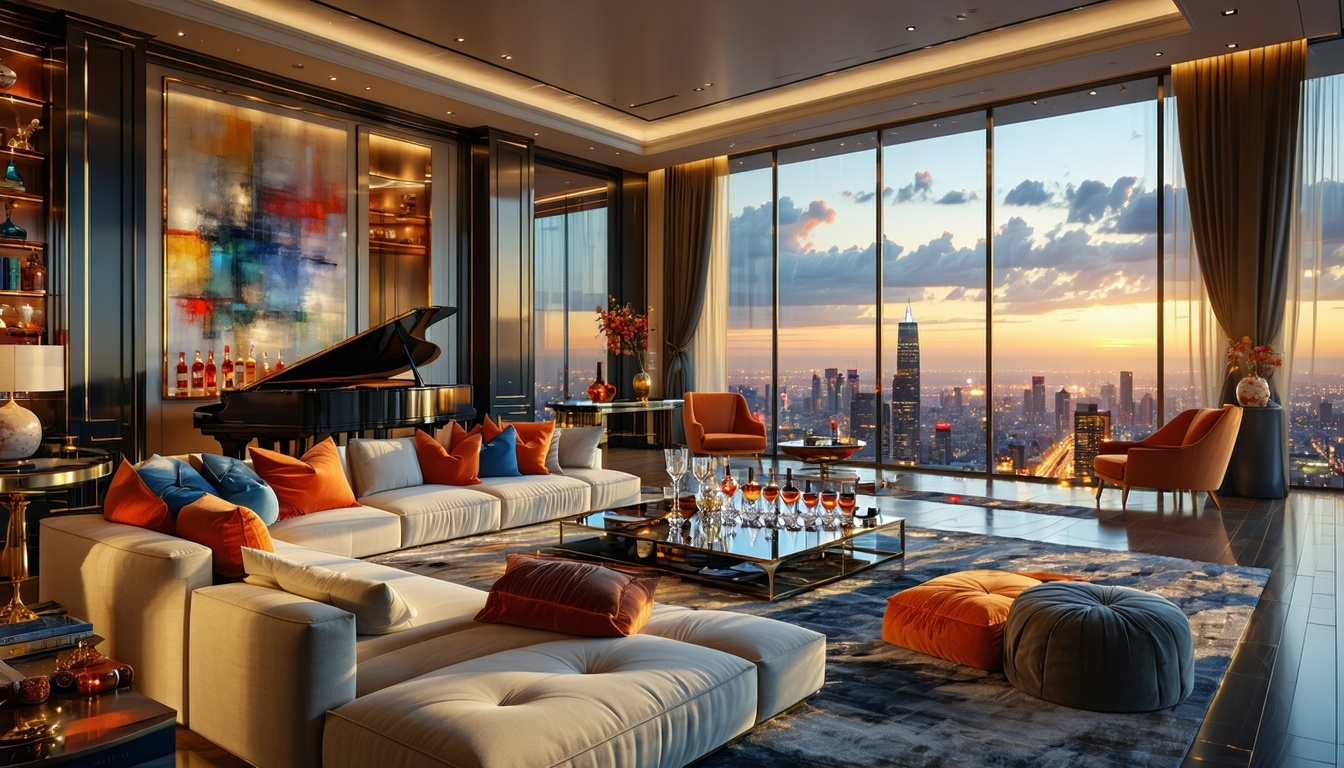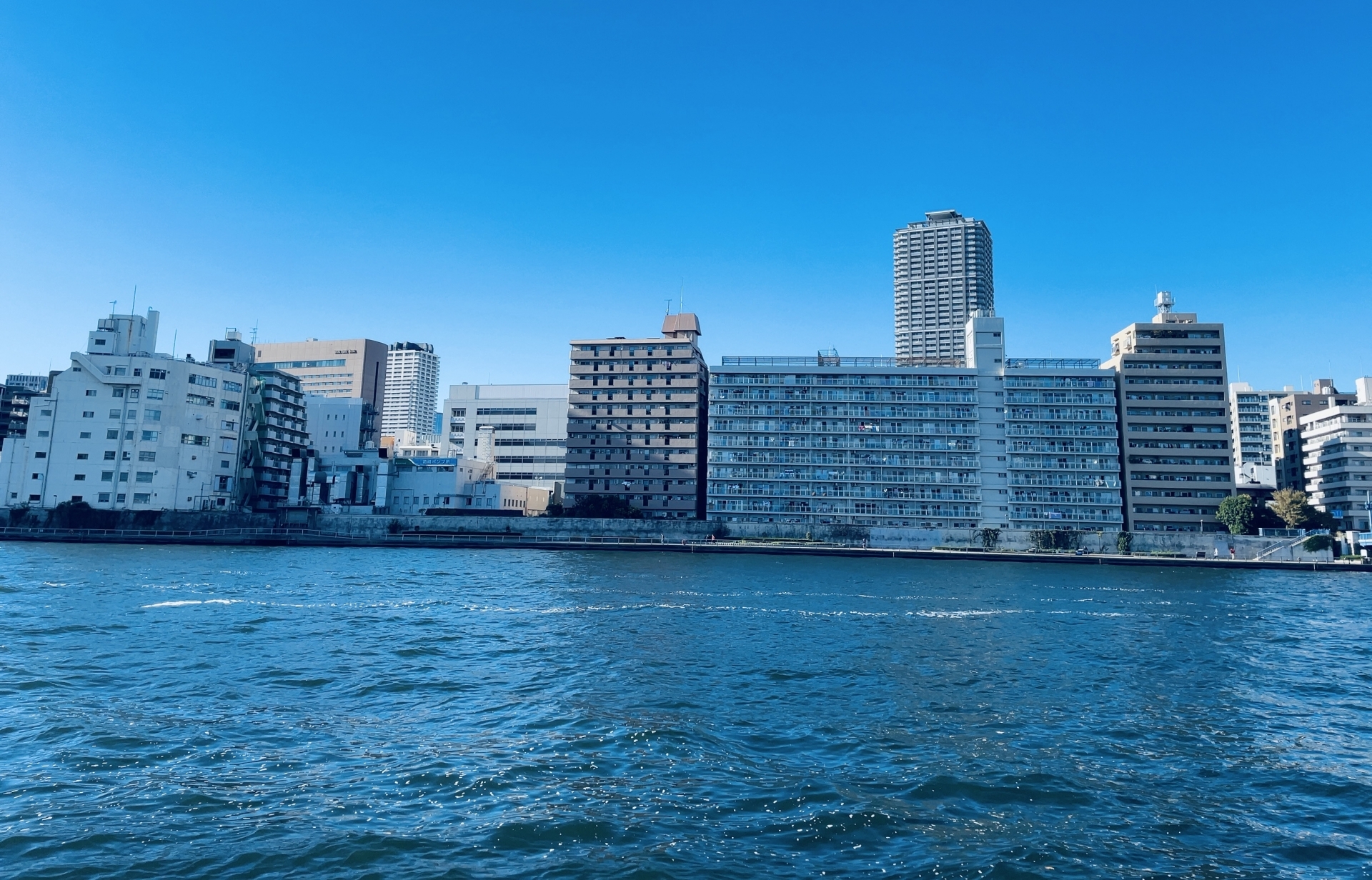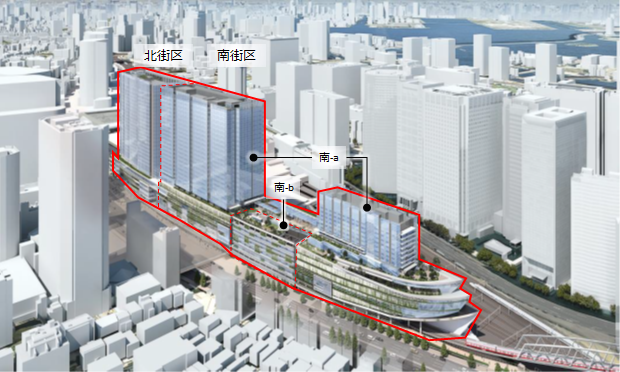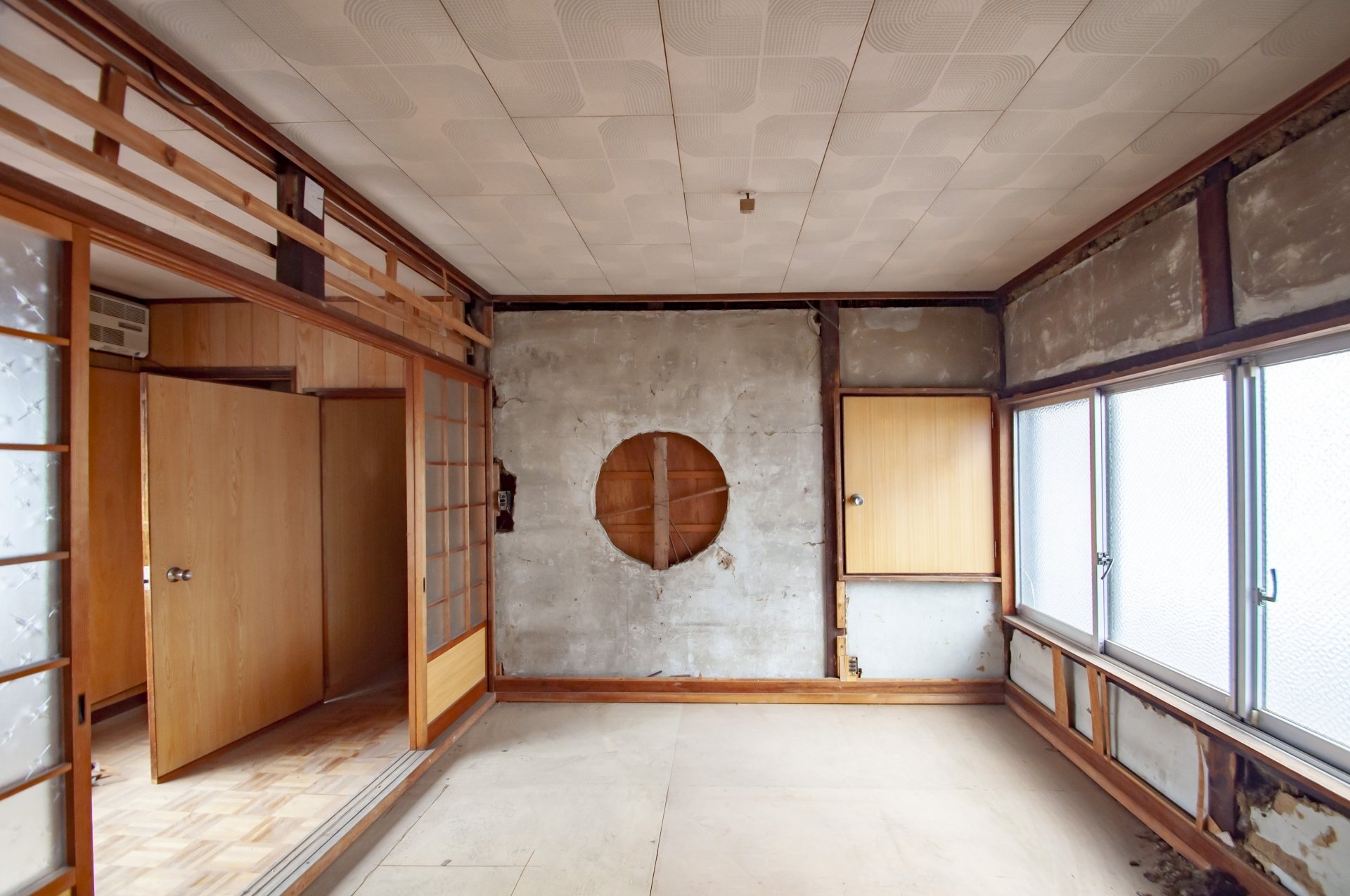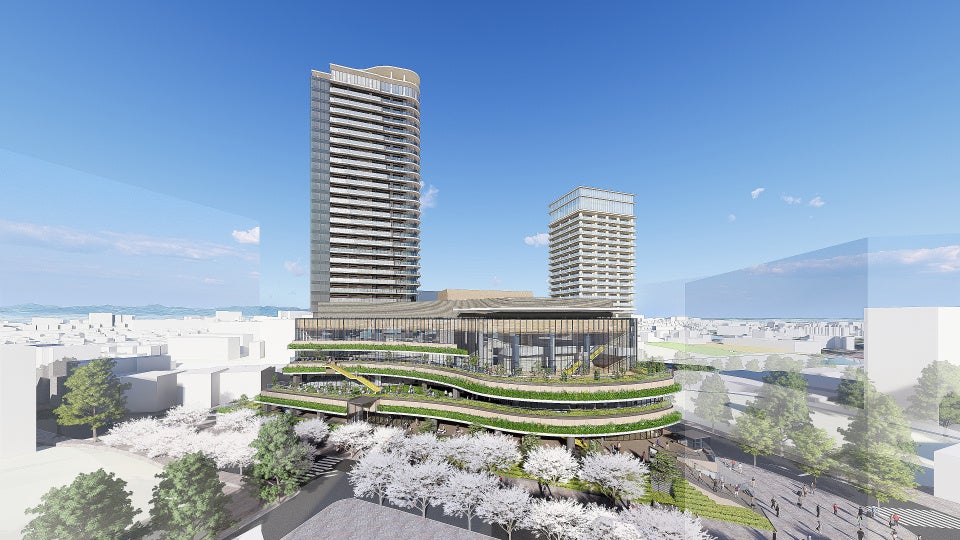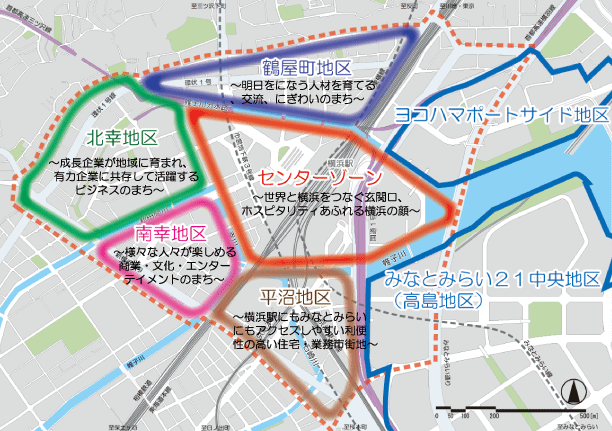
Quote from the website of DeNA Co.
The "Kawasaki Shin. Arena City Project," promoted by DeNA and Keikyu Corporation, is expected to become a new landmark in Kawasaki City, centered on an arena with a capacity of up to 15,000 people! Arena City Project," promoted by DeNA and Keikyu Corporation, is expected to become a new landmark in Kawasaki City, centered around an arena with a maximum capacity of 15,000 people. This article provides in-depth information on this project and related redevelopment plans in Kawasaki City.
Kawasaki New! Arena City Project in its entirety
Project Overview and Location
The "Kawasaki New! Arena City Project" is a large-scale redevelopment project jointly promoted by DeNA Corporation (DeNA) and Keihin Electric Express Railway Co. Located adjacent to Keikyu Kawasaki Station (25-4 Ekimae Honmachi, Kawasaki-ku, Kawasaki-shi, Kanagawa), the project is planned to be built around the site of the current KANTO Motor School Kawasaki.
With the planned expansion in November 2023, the area of the proposed construction site has increased by approximately 1,970 m2 from the original 11,670 m2 to a total of approximately 13,640 m2. This location is characterized by convenient transportation, with Haneda Airport at a minimum of 13 minutes away and Shinagawa Station at a minimum of 10 minutes away, providing excellent access from both domestic and overseas destinations.
Basic Project Information
| Project Name | Kawasaki New! Arena City Project |
|---|---|
| Project Entity | DeNA Corporation (DeNA), Keihin Electric Express Railway Co. |
| Planned construction site | 25-4 Ekimaehonmachi, Kawasaki-ku, Kawasaki-shi, Kanagawa 210-0007, Japan (currently KANTO Motor School Kawasaki) and adjacent land |
| Site area | Approx. 13,640 m2 (after expansion in November 2023) |
| Initial opening target | October 2028 |
| Current opening schedule | October 2030 or later |
Facility Configuration and Main Functions
Arena City plans to construct a main arena with a maximum capacity of 15,000 people on the Tama River side and a 17-story commercial building on the Keikyu Kawasaki Station side. As a large-scale facility capable of hosting a variety of events and sporting competitions, Arena City aims to become one of the leading entertainment centers in Japan.
The arena space can accommodate up to 15,000 people (when a center stage layout is adopted). During professional basketball games, it can accommodate up to 12,000 spectators. Designed for multi-purpose use, it can be used for various purposes such as concerts and events.
Floors 10-17: Hotel and restaurants
Floors 3-8: Spa (hot bath facility) and food hall
Floors 1-2: Sub-arena and live music hall (maximum capacity of 2,000 people)
Rooftop: Multi-purpose space
The third floor is the main entrance to the commercial building and main arena. It is planned as an open space that can be used for events, games, and other entertainment.
In addition, in conjunction with Kawasaki's efforts as an environmentally advanced city, the design is being considered for a "world-leading center for SDGs," including the use of the latest environmental technologies and renewable energy, with the aim of realizing a sustainable society.
Development Concept: "New, Kawasaki Style
The central concept of the project is "New, like Kawasaki. The concept expresses the city's commitment to creating new value while respecting the local character and history of Kawasaki.
New, just like Kawasaki.
Let's create it.
An arena for all genres of entertainment.
365 days a year, overflowing with excitement.
A place that respects life and the environment.
It will be interesting because we all work together.
We can create something new.
New Kawasaki! Sports, new Kawasaki! Music,
New Kawasaki! Art, Kawasaki New! Hotel,
Hotel, Kawasaki New! Park, Kawasaki New! Park, Kawasaki New!
There must be more.
Now, Kawasaki is opening its doors to the world,
and the future of Kawasaki open to the world.
This keyword, "Kawasaki New! expresses our commitment to creating new liveliness, value, surprise, and joy from this place in various ways. Each element of the project will be named in the form of "Kawasaki New! XXX" to each element of the project, indicating the desire to create a new culture.
The vision of the project is to create an entertainment hub open to the world, where the excitement of 365 days a year will spread throughout the city of Kawasaki. The vision is to create a new Kawasaki city centered on the arena. The goal is not just to build a facility, but also to create a new buzz in the surrounding area, to revitalize the economy, and to create a new culture.
Latest construction plan and opening schedule
Changes from the original plan
The "Kawasaki New! Arena City Project" has undergone several changes since its announcement in February 2023. The main changes are as follows:
Major Changes
- Expansion of site area: The area of the proposed construction site will be expanded from approximately 11,670 m2 to approximately 13,640 m2 in November 2023
- Increase in capacity: The maximum capacity of the main arena will be increased from the original 10,000 to 15,000
- Postponement of opening: The opening was originally scheduled for October 2028, but will be postponed to October 2030 or later.
- Change in construction start date: Construction will begin in 2026 or later, instead of 2025.
The scale of the project and its expected economic impact have increased significantly, especially with the expansion of the site area and the increase in capacity. This makes the arena capable of accommodating a larger number of spectators and increases the potential for attracting large-scale events.
Factors Contributing to Construction Delays and Future Outlook
On October 1, 2024, DeNA announced that the opening of the new arena adjacent to Keikyu Kawasaki Station will be delayed by approximately two years from the original schedule. The main factors contributing to this delay are listed below:
Major Factors of Construction Delay
- Shortage of personnel in the construction industry
- Difficulty in securing specialized contractors for electrical and HVAC equipment
- Need to revise some designs
According to DeNA, although a partial design review will be conducted, the impact on the overall plan, including costs, will be minimal. Under the current plan, construction is scheduled to begin in 2026 or later, with opening scheduled for October 2030 or later.
Kawasaki Spark" Limited-Time Park Initiative
In order to make effective use of the free time before the construction work starts, DeNA is planning to construct a "Kawasaki Spark" park on the site where the "Kawasaki New Arena City Project" is scheduled to be built! Arena City Project," a limited-time park called "Kawasaki Spark" opened on February 26, 2025.
Taking advantage of the topography of the former driving school, the facility is equipped with a 3-on-3 basketball court, a course for skateboarding, striders, and other vehicles, and parkour equipment, making it a space where visitors can easily try their hand at urban sports.
Kawasaki Spark Facility Overview
| Name | Kawasaki Spark |
|---|---|
| Period | February 26, 2025 (pre-opening) to early November 2025 (scheduled) |
| Location | 25 Ekimaehonmachi, Kawasaki-ku, Kawasaki-shi, Kanagawa (4-minute walk from Keikyu Kawasaki Station, 9-minute walk from JR Kawasaki Station) |
| Admission fee | Free (fees may be charged in some cases, such as when events are held) |
| Main Facilities | Park area, play area (basketball court), practice area (skateboarding, etc.), performance area (parkour) |
This initiative not only makes effective use of the vacant period until construction, but also serves as a place to deepen interaction with the local community and embody the Arena City concept of "Be Kawasaki, Be New." Events in conjunction with DeNA's Kawasaki Brave Thunders, various sports experiences and competitions Dance classes, and events related to food, music, and art are also scheduled to be held from time to time.
Details and Features of Arena City
Main Arena with a maximum capacity of 15,000 people
The core of Arena City is the Main Arena, located on the Tama River side, which can accommodate up to 15,000 people. The maximum capacity is reached when a center stage layout is used, but the design is flexible enough to accommodate a variety of layouts.
Main Arena Features
- Maximum capacity: 15,000 (with center stage layout)
- Capacity for basketball games: Approx. 12,000 people
- Multipurpose use: Suitable for a variety of uses, including concerts, exhibitions, and various events, as well as sports competitions such as basketball
- State-of-the-art facilities: State-of-the-art audio, lighting, and video systems will be installed
- Enhanced spect ator experience: Designed with an emphasis on the spectator experience, including comfortable seating, highly visible layout, and enhanced food and beverage service
The arena will be used as the home arena of the Kawasaki Brave Thunders, a professional basketball club affiliated with DeNA, but it will also be used for a variety of other events throughout the year, including concerts by top artists from Japan and abroad, various sporting events, and exhibitions. The facility will also be used as a home arena for the Kawasaki Brave Sanders.
Functions and Services of the Retail Building
The 17-story commercial building to be constructed on the Keikyu Kawasaki Station side will be integrated with the arena facility to provide a variety of services and enhance its appeal as an entertainment hub.
Upper floors (10-17F)
Hotel and restaurants
High-quality hotel facilities will accommodate arena spectators and tourists, and restaurants will offer a variety of cuisines. On the rooftop is a multipurpose space that is being considered for a variety of uses.
Middle floors (3-8F)
Spa (hot bath facilities) and food hall
A spa facility offering relaxation for body and mind, and a food hall where visitors can enjoy a variety of food culture. A wide variety of restaurants, including local Kawasaki restaurants, will be concentrated.
Lower Floors (1-2F)
Sub-arena and live music hall
A multipurpose hall that can accommodate live concerts and events for up to 2,000 people. It can also be used as a practice space when basketball games are held.
3rd floor plaza
Connection to the main arena
The core space connecting the commercial building and the main arena. It is planned as a multipurpose space that can be used for events and games.
Of particular note is that the 4th through 6th floors of the commercial building will be connected to the main arena, allowing for smooth movement between the various facilities. This is expected to enhance visitor circulation, such as using the commercial facilities before or after an event at the arena, and increase the time spent and consumption activity at the facility as a whole.
In addition, these facilities will target not only Kawasaki residents, but also tourists and business travelers from Japan and abroad, with a view to attracting international visitors by taking advantage of the easy access from Haneda Airport.
Harmony with the surrounding environment and accessibility
Arena City is planned not only to build facilities, but also to harmonize with the surrounding environment and to ensure sustainability.
Environmental Consideration and Sustainability Initiatives
- Linkage with the efforts of Kawasaki City, an environmentally advanced city
- Utilization of the latest environmental technologies and renewable energy
- Designed to be "the world's most advanced center for SDGs
- Securing greening space and coordination with the local green network
In terms of access, the plan is to maximize the location adjacent to Keikyu Kawasaki Station to encourage visitors to come by public transportation. Excellent accessibility, with a minimum of 13 minutes from Haneda Airport and 10 minutes from Shinagawa Station, will be a major advantage for visitors from Japan and abroad.
Access times from major locations
| Departure point | Means of Transportation | Time required |
|---|---|---|
| Haneda Airport | Keikyu Line | Minimum 13 min. |
| Shinagawa Station | Keikyu Line | Minimum 10 min. |
| Yokohama Station | Keikyu Line | Approx. 15 min. |
| Tokyo Station | JR Line → Keikyu Line | Approx. 30 min. |
In addition, the project is being considered in conjunction with the "Keikyu Kawasaki Station West Exit Area Type 1 Urban Redevelopment Project" being promoted by Kawasaki City, aiming to create a more attractive urban space through integrated development of the entire area surrounding the station.
Relationship with Todoroki Green Space "New Todoroki Arena

Adapted from Kawasaki City website
Outline of the Todoroki Green Space Reorganization and Improvement Project
A large-scale restructuring and improvement project is underway at Todoroki Green Space in Nakahara Ward, Kawasaki City, in order to address new issues such as aging facilities, improved disaster prevention measures, and response to changes in the social environment.
In February 2022, the Todoroki Green Space Reorganization and Improvement Implementation Plan was revised, and in April 2023, the Todoroki Green Space Reorganization, Improvement, and Operation Project was launched as a combined project of reorganization and improvement and management and operation, utilizing the project method based on the PFI Law.
Concept of Todoroki Green Space Reorganization and Improvement
"Todoroki Growing Link - Todoroki Green Space where nature, the community, and people are connected and continue to grow.
- A park in harmony with nature that will leave a legacy of abundant water and greenery 100 years from now.
- A park that is open to the community, where everyone can feel comfortable and connected to the community.
- A diverse park that makes the most of Todoroki's historical, cultural, and natural resources
This restructuring and improvement project aims not only to renew the facilities, but also to improve the attractiveness and sustainable use of the park as a whole, and the construction of the New Dokoroiki Arena is part of this plan.
Facility Plan of the New Dotoroki Arena
The New Doroki Arena is a new facility to be constructed on the site of the former Kawasaki Civic Museum, adjacent to the current Kawasaki City Todoroki Arena, and is scheduled to open by October 2028, and will also serve as a temporary home arena for the Kawasaki Brave Thunder.
Concept of the new Todoroki Arena
Arena of "Renso
- Renso: A layered design and architectural design appropriate for a new arena in Todoroki Park that has grown with the times and the environment.
- Interaction: The new Doroki Arena, the sports center, and the swimming pool are planned in an integrated manner, creating a chain reaction of activity throughout the green space by spreading activities both inside and outside.
- Associative: To create a chain of activities and diverse needs of the users and the local community An arena that can support the diverse needs and activities of users and the local community.
Features of the Switch Arena
The arena is planned as a unique arena that can be used both for public and entertainment purposes, and is designed as a flexible space that can be "switched" to accommodate various uses.
- Capacity: Approx. 5,000 people (with movable seats)
- Multi-purpose use: from sports competitions to events and concerts
- Ancillary facilities: Sports center, swimming pool
The new Todoroki Arena is characterized not only as a sports facility, but also as a "switch arena" that can flexibly accommodate a variety of uses, including cultural events, community activities, and health promotion. It is designed to be compatible with both citizen and entertainment use, and is envisioned to be used as a place for health promotion and sports activities by citizens on weekdays, and as an entertainment venue on weekends and during events.
Role Sharing and Cooperation of Both Arenas
Two large arena facilities will be constructed in Kawasaki City, each with different characteristics and roles, and they are expected to be complementary to each other.
Comparison of the two arenas and division of roles
| Kawasaki New! Arena City | New Todoroki Arena | |
|---|---|---|
| Capacity | Max. 15,000 people (approx. 12,000 for basketball games) |
Approx. 5,000 people |
| Scheduled opening | October 2030 or later | By October 2028 |
| Project Entity | Private sector (DeNA, Keikyu Corporation) | Public (Kawasaki City) |
| Location Characteristics | Adjacent to Keikyu Kawasaki Station (13 minutes from Haneda Airport) |
Within Todoroki Green (in harmony with park environment) |
| Main uses | Professional sports, large-scale concerts International events |
Compatibility of public use and entertainment use Medium-scale events |
Kawasaki New! Arena City will focus on large-scale international events, concerts by top artists, and official professional sports matches, while the new Todoroki Arena is envisioned to serve as a venue for citizen sports activities, medium-scale events, and community-based activities.
For the Kawasaki Brave Thunders, the plan is to use the current Todoroki Arena from the 2026-27 season through the 2027-28 season, with the new Todoroki Arena as their home from the 2028-29 season through the 2029-30 season, and then move to the new Kawasaki from the 2030-31 season! Arena City.
Thus, although the two arenas have different characteristics, they are expected to work together to enhance the sports and cultural environment of the entire city of Kawasaki.
Kawasaki Brave Thunders' New Location Plan
Entry into B.LEAGUE PREMIER and home arena transition plan
Kawasaki Brave Thunders, a professional basketball club under DeNA, was approved to enter B.LEAGUE PREMIER (B.PREMIER) from the 2026-27 season at the B.LEAGUE board meeting held on October 17, 2024.
PREMIER is the highest level of the B.LEAGUE and requires a certain standard for home arenas. Kawasaki Brave Thunders is the new Kawasaki! Arena City, and in response to the delayed opening of Arena City, has set the following home arena transition plan
Preparations have already begun to build a competitive team in B.PREMIER. Today is not a goal, but a start. We need to build a strong management foundation and create an attractive team that everyone can support.
-Wataru Kawasaki, President and Representative Director, DeNA Kawasaki Brave Thunders, Inc.
With this plan, the Kawasaki Brave Thunders are aiming to gradually transition to a better facility while meeting the standards of the B.PREMIER League. Ultimately, Kawasaki New! Arena City, when completed, will be one of the top home arenas in Japan in terms of size and facilities, and is expected to contribute significantly to the team's competitiveness and the spectator experience.
Community Revitalization Efforts Utilizing the Arena
The Kawasaki Brave Thunders, Kawasaki City, and DeNA are working together to revitalize the community around the arena. With the mission of "Kawasaki for the Future of Basketball," the goal is not only to put on basketball games, but also to contribute to the local community and create culture through sports.
Organizing Local Events
Participation in the "Rivasai!" social experiment utilizing the riverside of the Tama River and the "Kawabon! Festival," an event that allows people to enjoy Kawasaki's unique flavor of basketball, music, art, food, and more.
Health Promotion through Sports
Basketball classes and exercise programs for children and the elderly. Creating opportunities to interact with professional athletes and promoting health through sports.
Area Management Activities
Contribute to the revitalization of the town centered on railroads and stations and the formation of a vision for the future, in collaboration with the area management activities that Keikyu Corporation has been implementing since 2018 in Kawasaki City to co-create with the local community.
Creation of new culture
Support the creation of new culture in Kawasaki, including urban sports and street culture, through limited-time initiatives such as Kawasaki Spark. Provide a place for diverse people to gather and interact.
After the arena is completed, the plan is to actively develop community events, sports classes, and cultural activities using the facility on days other than when games are held. By doing so, the project aims not only to expand the fan base of the Kawasaki Brave Thunders, but also to contribute to the revitalization of the local community and the enhancement of the attractiveness of Kawasaki City.
Kawasaki City Mayor Norihiko Fukuda also commented, "We will continue to support the success of the Kawasaki Brave Thunders as they continue their drive to realize the club's mission, 'The Future of Basketball from Kawasaki. Kawasaki City is also actively supporting and collaborating with the Brave Thunders.
Positioning in Kawasaki City's Urban Strategy
Development Plan for the Kawasaki Station Area as a Regional Hub
Kawasaki City has positioned the area around Kawasaki Station as a "wide-area hub" and is systematically promoting urban development that is appropriate for the gateway to Kawasaki, taking advantage of its geographical advantages such as its direct connection to Haneda Airport.
In May 2024, Kawasaki City compiled the "Progress and Direction of Project Guidance for the Keikyu Kawasaki Station Area Urban Development," which outlines the direction of urban development for the integrated and strategic development and utilization of the Keikyu Kawasaki Station area.
Major Redevelopment Projects around Kawasaki Station
- Kawasaki New! Arena City Project: Entertainment complex by DeNA and Keikyu Corporation
- Keikyu Kawasaki Station West Exit Urban Area Redevelopment Project Type 1: Redevelopment project for which Keikyu Corporation is the designated development actor
- Renewal of commercial facilities around Kawasaki Station: Renewal of existing commercial facilities and promotion of new store openings
- Strengthening the function of Kawasaki Station as a transportation node: Making Kawasaki Station barrier-free and improving transfer convenience
These projects are expected to work in tandem with each other and create synergies. In particular, the "Kawasaki New! Arena City Project" is expected to serve as a catalyst to accelerate redevelopment of the surrounding area due to its scale and ability to attract international visitors.
Kawasaki City aims to enhance the international competitiveness of the Kawasaki Station area and establish its position as an important regional hub in the Tokyo metropolitan area by promoting city planning for integrated and strategic development and utilization of the area in collaboration with adjacent redevelopment projects, while making maximum use of private-sector vitality.
Significance of an entertainment center "open to the world
Kawasaki New! Arena City Project" will not only raise the international profile of the facility, but will also contribute to the globalization of Kawasaki City as a whole and the enhancement of its international presence.
Ability to Attract International Visitors
Taking advantage of its location just 13 minutes from Haneda Airport, the facility will attract international events, conferences, and sporting competitions. It is also expected to become an attractive destination for foreign visitors to Japan.
A Place for Cultural Exchange
It will function as a place where artists, creators, and athletes from Japan and abroad will gather for cultural exchange and new cultural creation. It will be a center of interactive exchange where Japanese culture can be transmitted and international culture can be accepted at the same time.
City Branding
Kawasaki will enhance its international visibility and image through world-class facilities and international events. Establish a new city brand from "industrial city" to "international entertainment hub.
It is also important to note that this project aims to become a "world-leading center for SDGs. The project aims to contribute to solving global issues in conjunction with Kawasaki's efforts as an environmentally advanced city, including the use of environmental technologies, renewable energy, and sustainable architectural design.
This "open to the world" perspective means not only increasing the number of visitors from overseas, but also creating new value by leveraging Kawasaki's uniqueness and strengths while incorporating international standards and trends. The concept of "New, like Kawasaki" expresses our commitment to fusing global standards with the uniqueness of the region.
Economic Impact of the Redevelopment and Future Prospects
Annual economic ripple effect after completion
The main arena of the "Kawasaki New! Arena City Project," the annual economic ripple effect after the completion of the facility is estimated to be approximately 127.37 billion yen, calculated with the help of EconomicEffect.NET, based on the estimated scale and composition of uses for the main arena and commercial buildings.
Main factors of the economic ripple effect
- Approximately 40 home games (including CS, etc.) of the Kawasaki Brave Thunders in the B.LEAGUE 2028-29 season (scheduled to open in October 2028)
- Concerts using the arena
- Non-Kawasaki Brave Thunders sporting events
- Sales and marketing activities of live halls, food halls, hotels, and spas to attract visitors
This economic ripple effect is a comprehensive figure that includes not only direct revenues from facility operations, but also ripple effects on restaurants, retail stores, and lodging facilities in the surrounding area, as well as indirect economic effects on related industries.
It is also expected to have a multifaceted positive impact on the local economy, including the creation of new jobs and increased tax revenues. Of particular importance is the fact that the stable holding of events throughout the year is expected to generate ongoing, rather than transitory, economic benefits.
International Expansion Utilizing Good Accessibility to Haneda Airport
The excellent accessibility of Keikyu Kawasaki Station to Haneda Airport, which is a minimum of 13 minutes from the station, is a key factor in the international expansion of the "Kawasaki New! Arena City Project" will be a major strength in its international expansion.
Advantages of proximity to Haneda Airport
- Capturing inbound demand: Location where foreign visitors to Japan can casually drop by
- Attracting international events: Less travel burden for artists and sports teams from abroad
- Attracting business demand: Location is ideal for hosting international conferences and business events
- Convenience for foreign visitors: Convenient access to and from the airport in a short time
Haneda Airport is already an international airport used by more than 80 million people annually, and has the potential to direct this huge flow of people to Kawasaki City. In addition, Shinagawa Station on the Linear Central Shinkansen Line is scheduled to open in 2027, which is expected to dramatically improve access from the Nagoya area.
Against the backdrop of this enhanced transportation infrastructure, the "Kawasaki New! Arena City Project" is expected to function as an international entertainment hub not only in Japan but also in Asia. In particular, it may attract attention as a venue for international sporting events and artists' Asian tours.
Expectations for Kawasaki as a New Cultural and Creative Hub
The "Kawasaki New! Arena City Project" is expected to serve not only as a place to hold events, but also as a new center for cultural creation in Kawasaki.
Fusion of Diverse Cultures
The Arena City Project will function as a place where various genres of culture, such as sports, music, art, and food culture, will intermingle and where new expressions and culture will be born. Under the concept of "Kawasaki New! concept, it promotes the creation of new cultural values that transcend existing boundaries.
Establishment of regional identity
Kawasaki, with its history as an industrial city, has established a new identity as a center of entertainment and culture. Fostering a sense of unity and attachment to the region as a symbolic place of pride for its citizens.
Development of Creative Industries
Creative industries such as music, design, video, and games will be concentrated around the arena. The formation of a new industrial ecosystem and the concentration of creative human resources will be promoted, contributing to the diversification of the industrial structure.
Nurturing the next generation and creating educational opportunities
Provide opportunities for children and youth to experience and participate in top-level sports and arts. Contribute to the development of the next generation of athletes, artists, and creators and the creation of diverse educational opportunities.
The "open to the world" perspective implies a two-way relationship, embracing international culture while at the same time transmitting Kawasaki-born culture to the rest of the world. It is hoped that Kawasaki will increase its cultural richness through exchanges with artists, athletes, and creators from abroad.
In addition, the "Kawasaki New! Arena City Project," the entire Kawasaki Station area has the potential to develop into a cultural and creative district as cultural facilities and activities expand into the surrounding area.
Summary: An important project that will shape the future of Kawasaki City
Kawasaki New! Arena City Project" is steadily progressing as an important project that will shape the future of Kawasaki City, although there have been some changes in plans, such as the postponement of the opening date. The entertainment complex, centering on the main arena with a capacity of up to 15,000 people and a 17-story commercial building, is estimated to have an annual economic ripple effect of approximately 127.3 billion yen after completion.
The project is also planned to contribute to the enhancement of the sports and cultural environment of Kawasaki City as a whole, in coordination with the development of related facilities such as the "New Todoroki Arena" in Todoroki Greenbelt. The Kawasaki Brave Thunders will join the B.LEAGUE PREMIER in the 2026-27 season, and will gradually shift its home arena as it works to develop the team and revitalize the community.
Under the concept of "Kawasaki, new, like Kawasaki," the creation of an entertainment center "open to the world" with an international perspective while taking advantage of local characteristics is an important part of Kawasaki City's urban strategy. It is also expected to play a role as a new cultural and creative center for Kawasaki, taking advantage of its easy access from Haneda Airport.
Currently, a limited-time park called "Kawasaki Spark" has been established, and even before construction, the project has already begun to interact with the local community and create new cultural activities. This step-by-step approach is expected to help the arena smoothly integrate into the community after its completion and become a facility that will be loved by the public.
Future Prospects for the Kawasaki Station Arena Redevelopment
Kawasaki New! Arena City Project" and the "New Todoroki Arena" are expected to complement each other and greatly enhance the sports and cultural environment of Kawasaki City. With these facilities at its core, Kawasaki City as a whole will further develop and enhance its international presence.
As we move toward the opening of the new arena in 2030, we anticipate that the progress of the plan and detailed information will continue to be released as needed. We will continue to keep a close eye on the project.

Daisuke Inazawa
Representative Director of INA&Associates Inc. Based in Osaka, Tokyo, and Kanagawa, he is engaged in real estate sales, leasing, and management. He provides services based on his extensive experience in the real estate industry. Based on the philosophy that “human resources are a company's most important asset,” he places great importance on human resource development. He continues to take on the challenge of creating sustainable corporate value.

.png)


